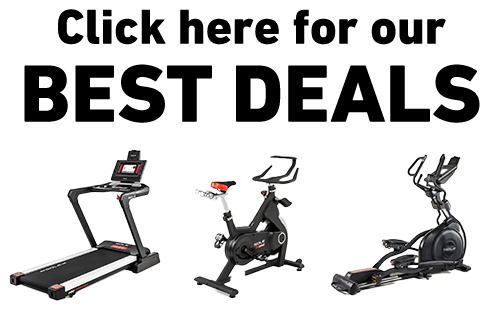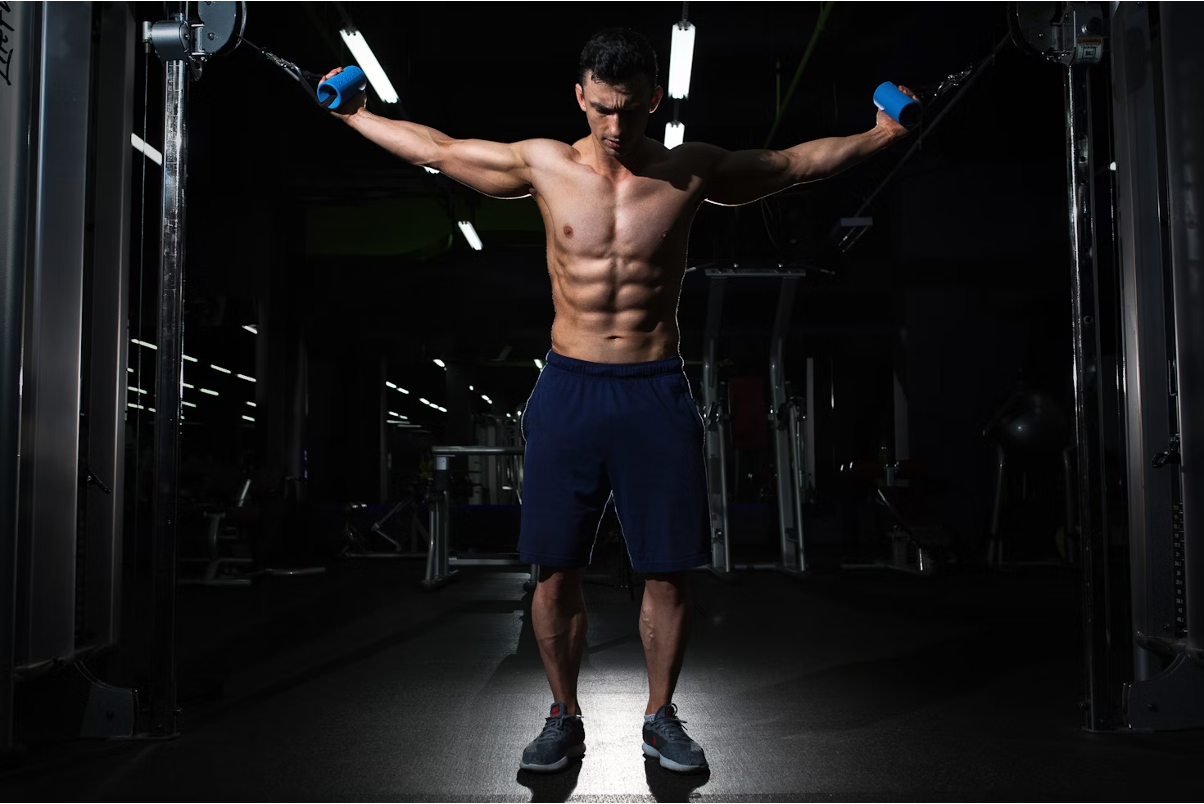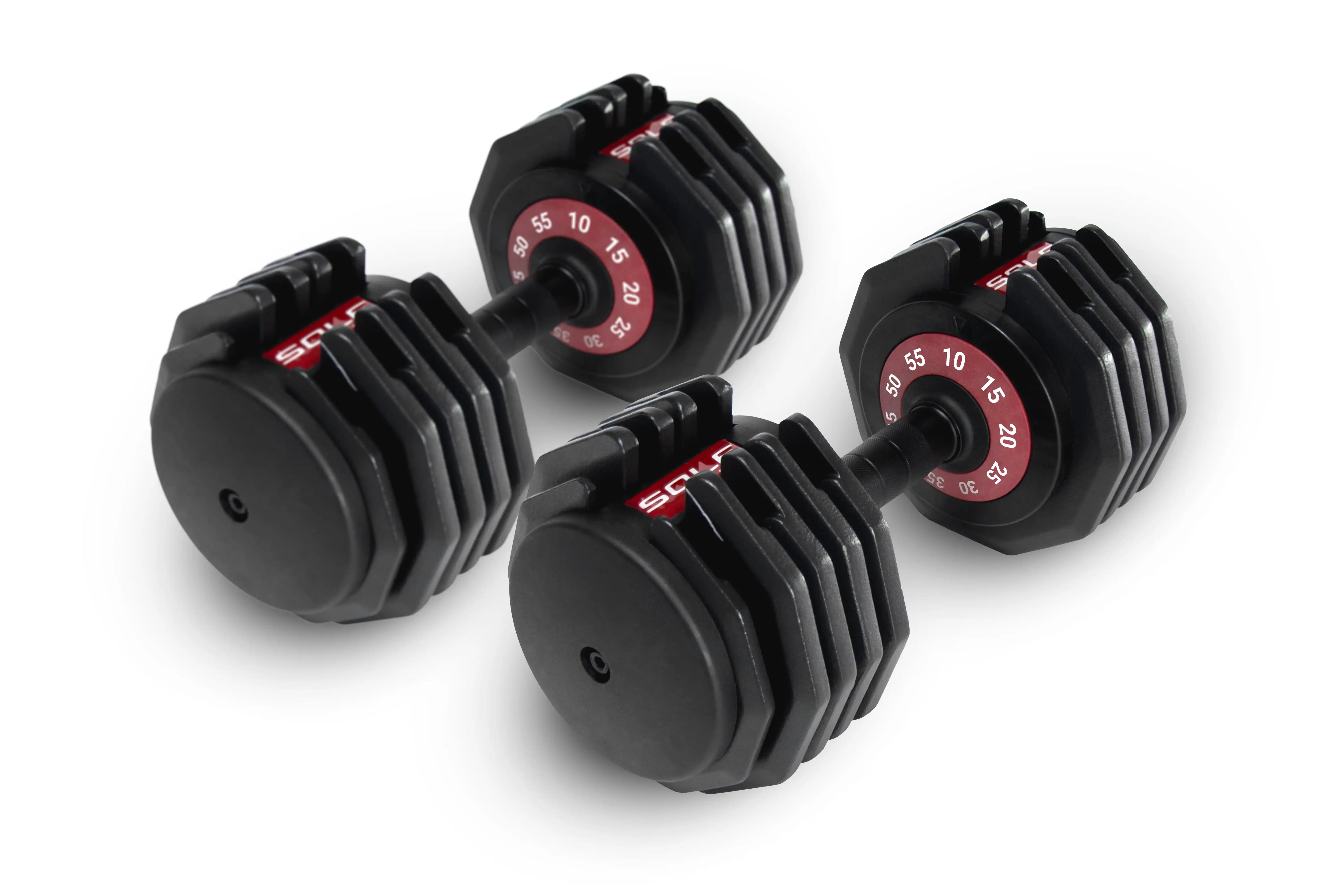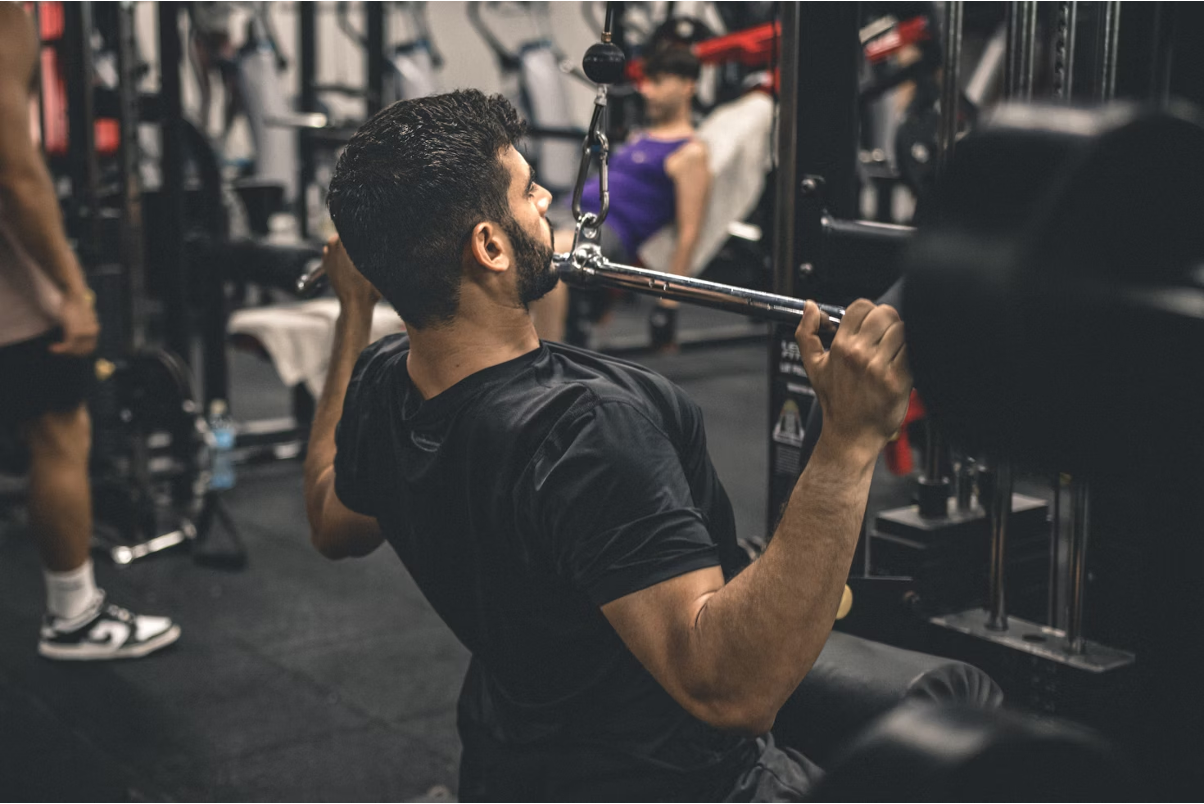Key Takeaways
- Resistance band lateral raises deliver constant tension throughout the movement, making them the closest match to cable exercises
- Water bottle lateral raises are perfect for beginners and can be progressively overloaded by adjusting fill levels.
- Bodyweight Y-raises require zero equipment but can effectively target the medial deltoids when performed with proper form.
- Maintaining time under tension and focusing on the mind-muscle connection can make simple household equipment as effective as gym machines.
- SOLE adjustable dumbbells provide precise resistance progression from 5–80 pounds for lateral raises and complete shoulder development.
Why Cable Lateral Raises Matter for Complete Shoulder Development
The Special Benefits of Cable Resistance
Cable machines create what's called "linear variable resistance;" it means the resistance changes based on angle but stays constant throughout the movement. This keeps your muscles engaged even at the starting position, preventing the momentum cheating that happens with free weights. For side delts specifically, this continuous tension creates more muscle damage and growth.
Another benefit is the stabilization work. Cables force your rotator cuff muscles to work hard to keep proper shoulder position. This builds not just size but functional strength that transfers to everyday activities and other exercises.
What Happens When You Skip Side Delts
Many home workout fans focus heavily on push-ups and pike presses, which mainly hit the front delts while leaving side delts underdeveloped. This imbalance doesn't just look bad, it can lead to shoulder impingement, rotator cuff injuries, and poor posture.
Your side delts play a crucial role in shoulder stabilization and upper body structure, which makes them essential for both performance and injury prevention.
|
At SOLE, we're proud to offer top-quality exercise equipment designed for home and gym use. Our machines are built to meet the highest standards of durability and performance, making them ideal for fitness enthusiasts at any level. SOLE Products
|
1. Resistance Band Lateral Raises
Resistance bands offer the closest match to cable machines for resistance profile and muscle activation. The increasing tension as the band stretches actually creates an advantage over cables. (Image courtesy of Men’s Health)
How to Set Up Your Bands for Maximum Tension
For the most effective resistance band lateral raise, secure your band under your foot on the same side as the working arm. Stand in the middle of the band with your foot flat for a stable anchor point.
Grab the handle or band end with your palm facing down. Position your starting hand just in front of your thigh with a slight elbow bend.
Progressive Overload Tips for Continuous Growth
To keep challenging your shoulders with bands, you need smart progression techniques. The simplest method is to gradually move your foot closer to the center of the band. This shortens the length and increases baseline tension. As you advance, consider doubling up bands or buying a set with different resistance levels.
Don't forget about tempo manipulation for progression. Slow down the lowering phase to 3–4 seconds for significant metabolic stress without needing heavier resistance. Add a 2-second pause at the top where your delts are fully contracted to stimulate new growth with the same band.
Track your progress by counting quality reps before reaching failure. When you can do 15+ strict reps with perfect form, increase the resistance or adjust your foot position.
2. Water Bottle Lateral Raises: Turn Household Items into Shoulder Sculptors
When bands aren't available, your kitchen and laundry room become your equipment source.
Water bottles filled to your desired weight make excellent dumbbell substitutes for lateral raises. The beauty is the customization; adjust the fill level to match your strength perfectly.
The slightly unstable nature of partially filled bottles adds a functional challenge that gym equipment can't replicate. As water shifts during movement, your stabilizing muscles work overtime to maintain control, creating greater development throughout your shoulder complex.
Finding the Right Weight: From Water Bottles to Laundry Detergent
Start with standard 16-20oz water bottles for beginners, which give you about 1–1.25 pounds when filled. Progress to 1-liter bottles (about 2.2 pounds), then 2-liter soda bottles (around 4.4 pounds filled).
Advanced lifters can use laundry detergent bottles or milk jugs for 6–8 pounds that challenge even experienced athletes. Always check caps are tight before starting to avoid spills.
The Tempo Technique That Maximizes Muscle Activation
The secret to making lightweight bottles feel heavy is manipulating time under tension. Use a 2-1-4 tempo: 2 seconds to raise the bottles, pause for 1 second at the top, then lower over 4 seconds. This maximizes side delt work with minimal weight.
Another effective technique is the pulse method. Do tiny 1-2 inch pulses at the top for 5–10 reps before lowering. This floods the muscle with blood and creates significant stress even with light loads.
Try the "21 method" with your water bottles: do 7 partial reps in the lower half, 7 partials in the upper half, then 7 complete reps. This fatigues different muscle fibers and creates comprehensive development.
Keep perfect form throughout. Maintain a slight elbow bend, neutral wrist position, and avoid shrugging or swinging the weights up.
How to Create Variable Resistance Without Cables
One limitation of water bottles compared to cables is the resistance curve. Bottles get lighter at the top due to leverage changes, while cables maintain consistent tension. To fix this, use resistance bands with your water bottles. Loop a light band around your wrist and under your foot, then hold the bottle in the same hand. Now you get increasing resistance as you raise the bottle, similar to cables.
Another creative approach is using uneven water distribution. Fill your bottle halfway and perform lateral raises with the water sloshing inside. The dynamic water movement creates unpredictable resistance that forces continuous muscle adaptation throughout each rep.
Form tip: Your arms should form a straight line with your shoulders at the top, with bottles slightly in front of your body to minimize rotator cuff strain. Think "pouring water" with pinkies slightly higher than thumbs.
Mark your bottles with permanent lines showing different fill levels. This creates a visual progression system as you gradually increase water volume over weeks.
If water bottles are too light even when full, add salt to increase density or replace water with sand for about 60–100% more weight. Just make sure your bottle seals completely if using sand.
3. Bodyweight Y-Raises: Zero Equipment, Maximum Results
For the truly minimalist fitness enthusiast, bodyweight Y-raises offer an equipment-free solution that effectively targets side delts when done correctly. This movement uses your body position to create resistance against gravity, making it accessible anywhere.
The most effective way is to lie face down with arms extended overhead in a Y position (about 45 degrees from your torso). (Image courtesy of Performance course)
Lift your straight arms several inches off the ground while externally rotating your shoulders so thumbs point up. Hold the top for 2–3 seconds before lowering with control.
Floor vs. Stability Ball Variations for Different Fitness Levels
The floor variation is excellent for beginners to develop proper form. As you progress, using a stability ball dramatically increases effectiveness by allowing greater range of motion. The ball lets your arms drop below torso level, creating a pre-stretch before the lift begins. This extended range significantly enhances muscle fiber recruitment.
Without a stability ball, an inclined surface like a couch works as an intermediate step. Position yourself so your upper body is elevated, letting arms hang at the start. This creates the necessary pre-stretch without extra equipment. If this gets easy, wear wrist weights or hold small objects to increase difficulty.
The Mind-Muscle Connection That Makes This Move Effective
The real secret to effective bodyweight Y-raises is developing a strong mind-muscle connection with your delts. Before starting, mentally "activate" your shoulder muscles by consciously tensing them. Throughout each rep, visualize your side delts as the primary movers, lifting your arms with these muscles alone rather than using momentum.
Upgrade from Water Bottles to SOLE’s Professional Home Shoulder Training
While water bottles and resistance bands can work in a pinch, you deserve equipment that grows with your fitness journey. SOLE's SW180 and SW155 adjustable dumbbells transform lateral raises from a makeshift exercise into a professional shoulder-building movement.
With weights adjustable from 5–80 pounds, SOLE dumbbells provide the perfect resistance for lateral raises.
What makes SOLE dumbbells superior to water bottles? Precision. You can increase weight in exact increments as you get stronger, not just guess with water levels. The balanced weight distribution means you're focusing on muscle engagement, not fighting to control sloshing liquid. Plus, the ergonomic handles reduce wrist strain during high-rep shoulder work, something you can’t try with a laundry detergent bottle!
For those Y-raises mentioned, the SOLE Equipment Mat provides the perfect cushioned surface that makes floor exercises comfortable while protecting your equipment. Pair it with the SW116 Weight Bench set at an incline, and you've got a professional setup for those elevated Y-raise variations that really stretch and work your rear delts.
The SOLE+ app brings it all together with guided shoulder workouts that show proper form for lateral raises and dozens of other shoulder exercises.
Frequently Asked Questions (FAQ)
How many times per week should I train shoulders at home?
For best shoulder development, train them directly 2–3 times weekly with at least 48 hours between sessions. Because home workouts use lighter weights, slightly higher frequency can help compared to heavy gym training.
If you're doing push-ups on other days, reduce dedicated shoulder sessions to twice weekly to prevent overtraining. Listen to your body, persistent shoulder pain or decreased performance means you need more recovery time.
Can these exercises really replace cable lateral raises effectively?
Yes, these alternatives can be equally effective when done correctly. While cables offer consistent tension through mechanical advantage, resistance bands provide similar and sometimes better resistance.
Water bottle raises with proper tempo create sufficient time under tension for growth. Bodyweight variations can progress by manipulating leverage and position. Effectiveness comes from execution quality more than equipment; perfect form with household items beats sloppy technique with expensive machines.
What if I don't feel these exercises in my side deltoids?
If you're not feeling side delt activation, check for common form issues: excessive trap involvement (shrugging), internal shoulder rotation, or momentum-driven movement.
Try the exercise in front of a mirror with lighter weight and slower tempo. Lead with your elbows rather than hands. Try pre-activation. Place your palm against a wall with slight pressure for 30 seconds to "wake up" the side delt fibers. Don't raise your arms above shoulder level, which shifts emphasis to upper traps.
How heavy should my makeshift weights be for lateral raises?
For lateral raises with water bottles, the right weight lets you do 10–12 clean reps with the last 2–3 being challenging but doable with perfect form. Most beginners should start with 16–20 oz partially filled bottles (about 0.5–1 pound each) and gradually increase.
Even advanced lifters rarely need more than 4–5 pounds per arm for strict lateral raises; this movement is about precision, not maximum load. If you can easily do 15+ reps, increase weight by filling bottles more or finding heavier objects.
Are SOLE's adjustable dumbbells really worth it compared to using water bottles for lateral raises?
Yes, they're absolutely worth it if you're serious about shoulder development. Water bottles are creative for emergencies, but let's be real about the limitations.
With the SW180 or SW155 adjustable dumbbells, you can increase weight by precise amounts as you get stronger. Going from 8 pounds to 10 pounds is a perfect progression for lateral raises.




Leave a comment
This site is protected by hCaptcha and the hCaptcha Privacy Policy and Terms of Service apply.